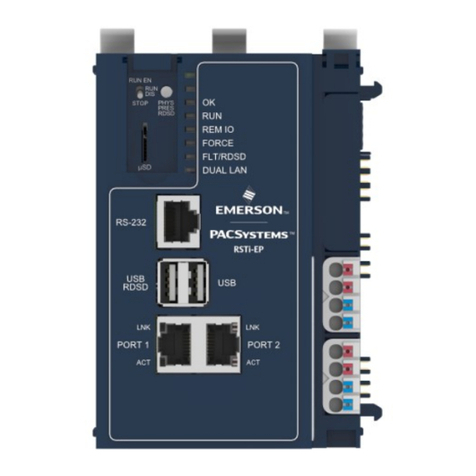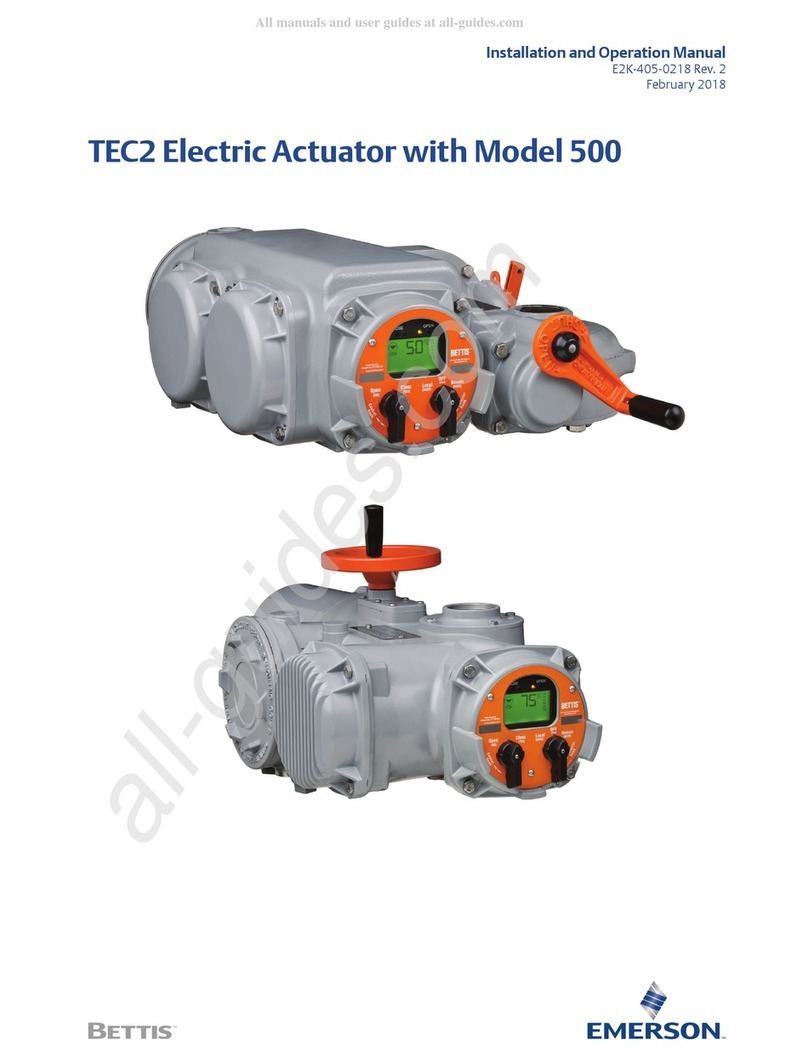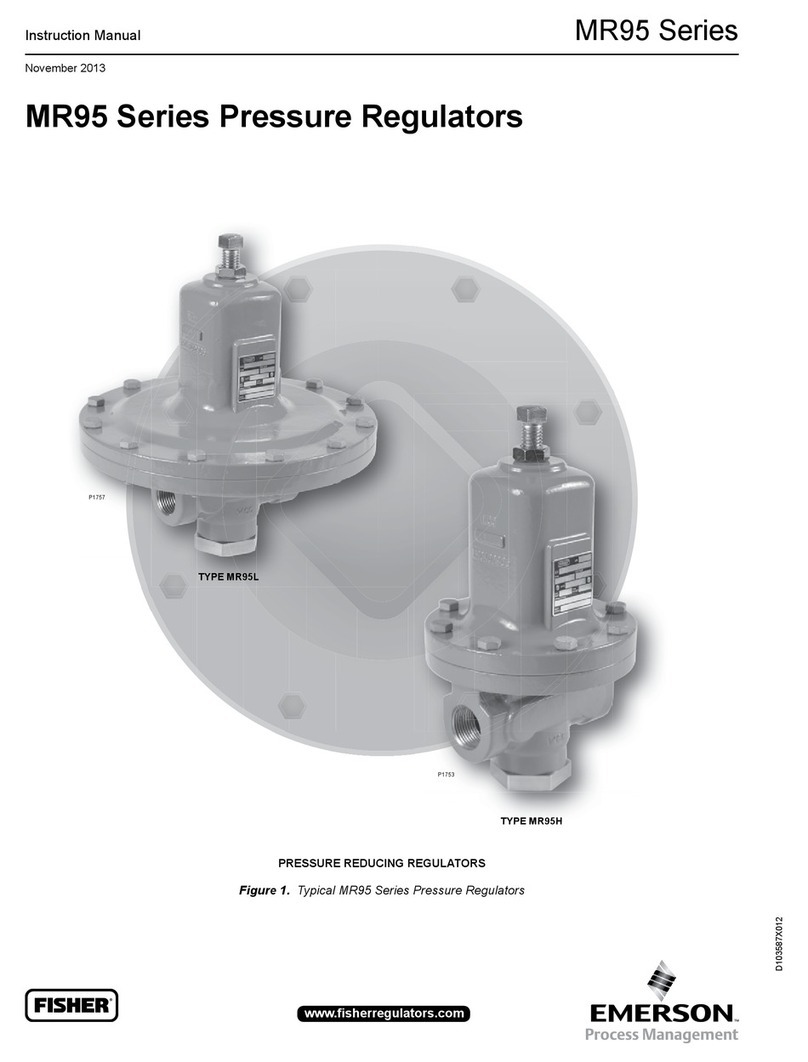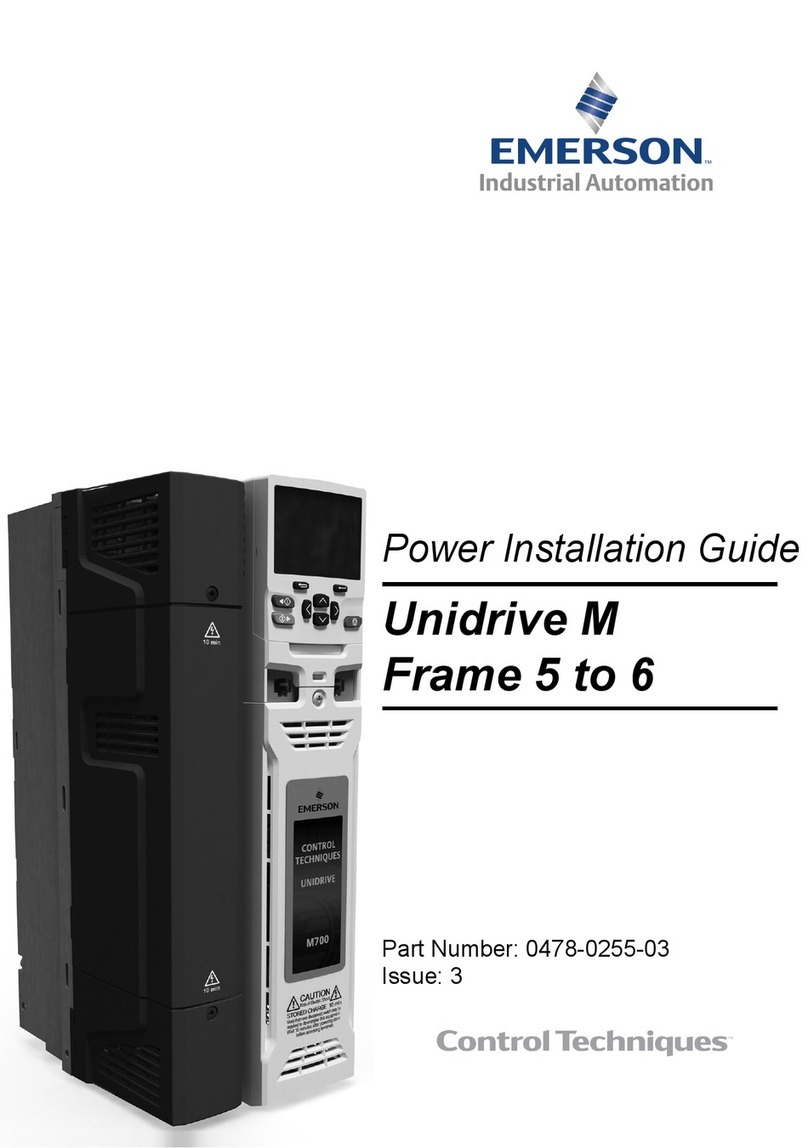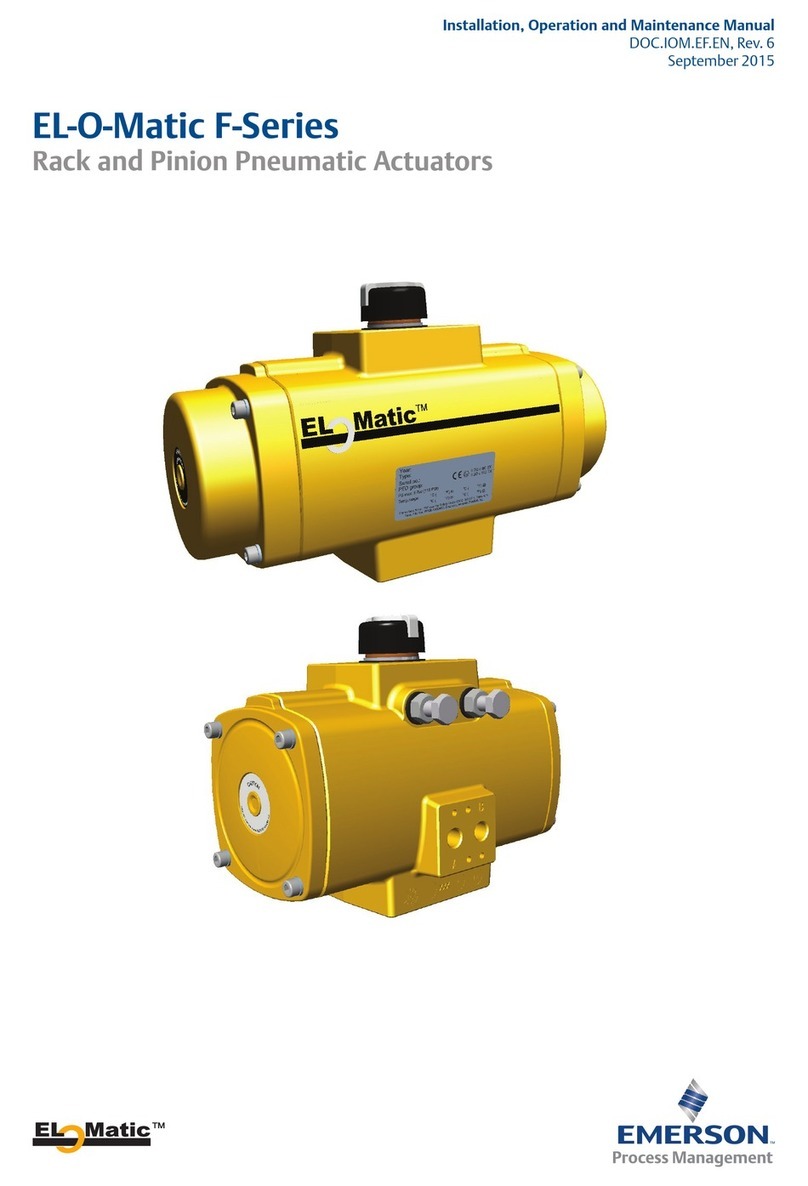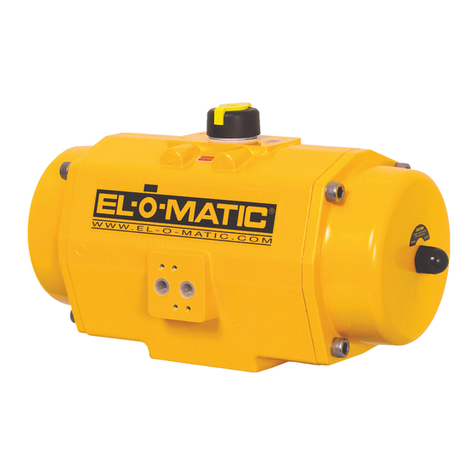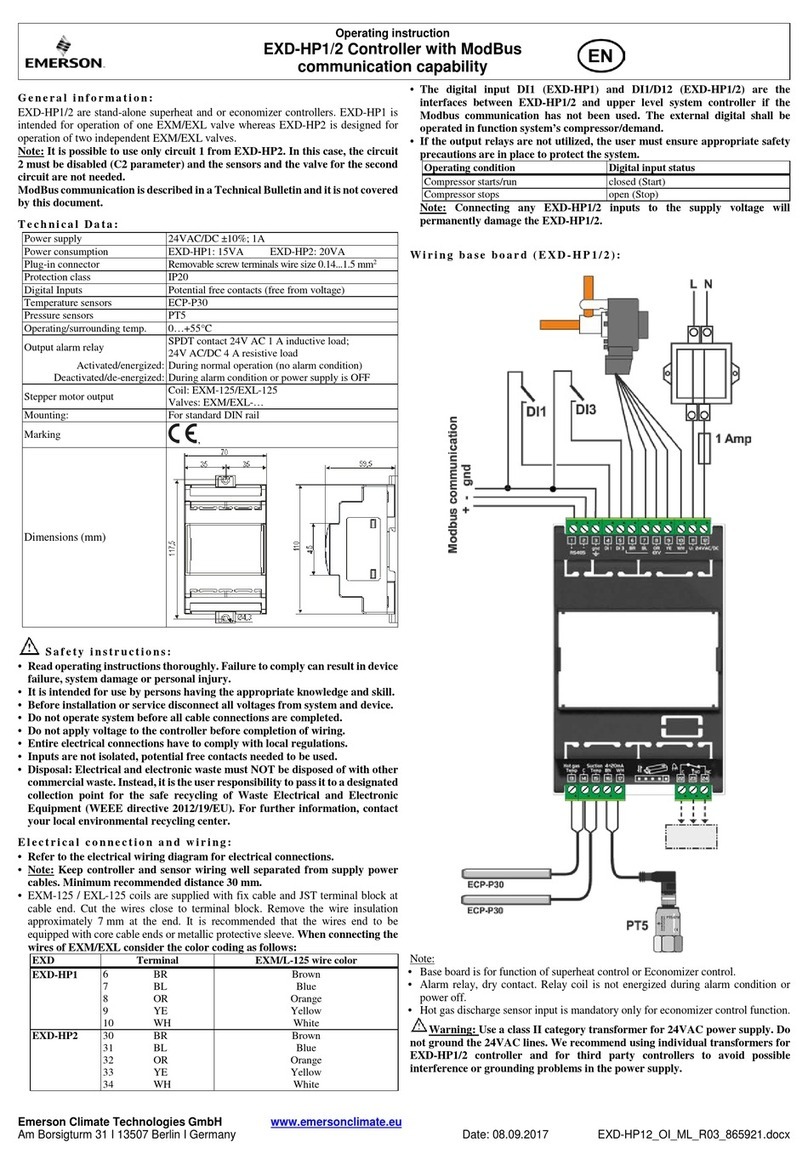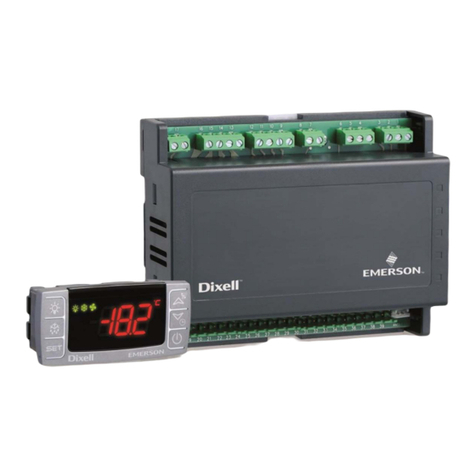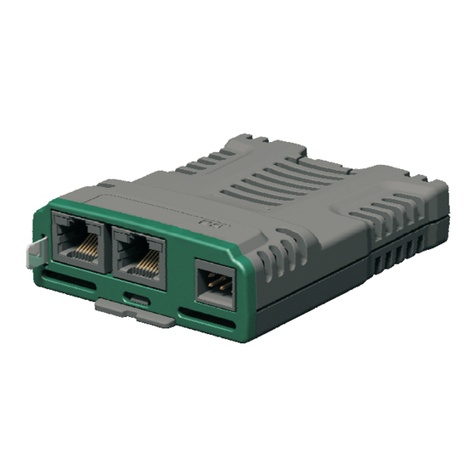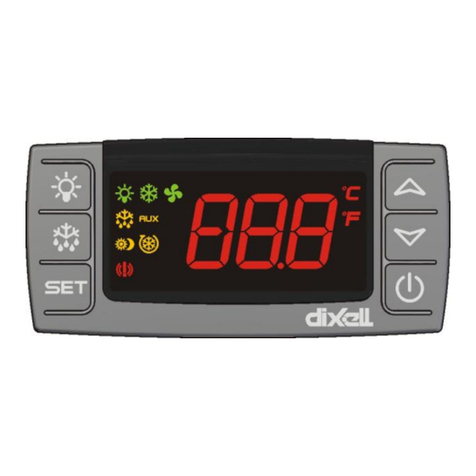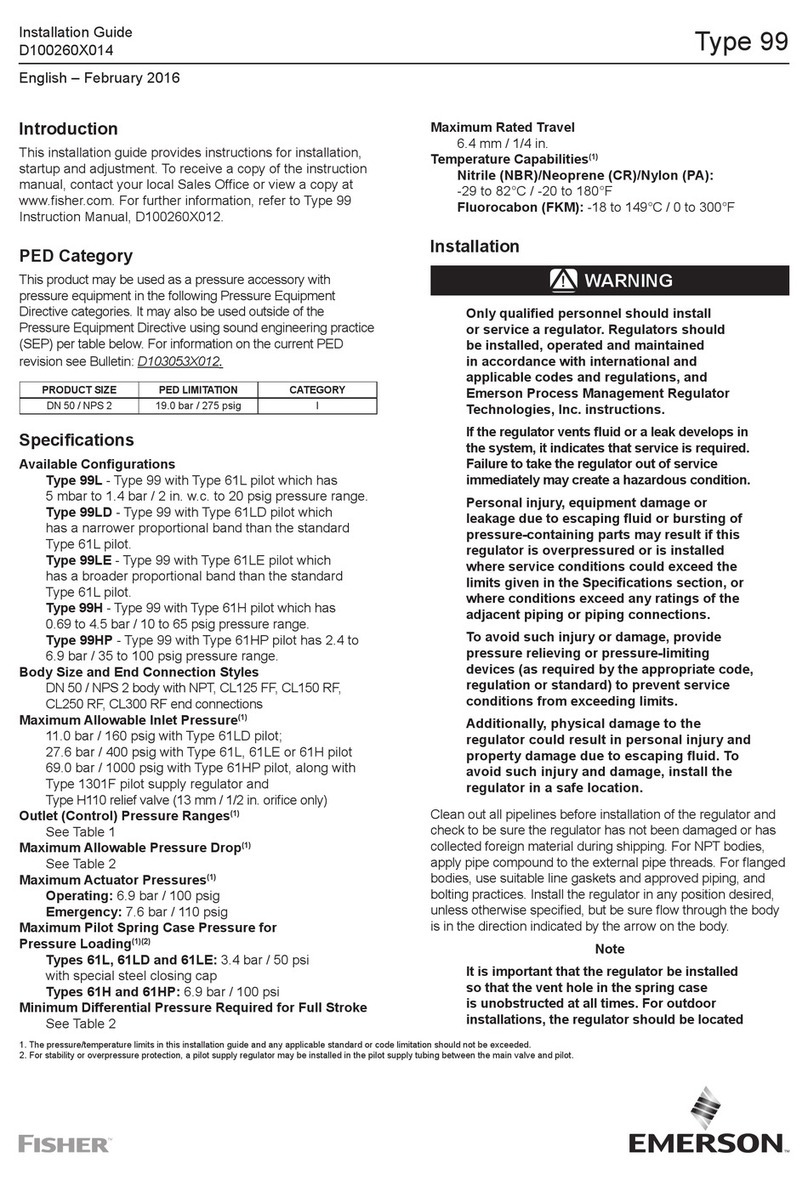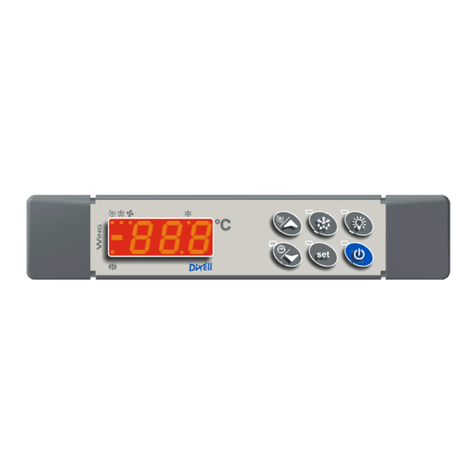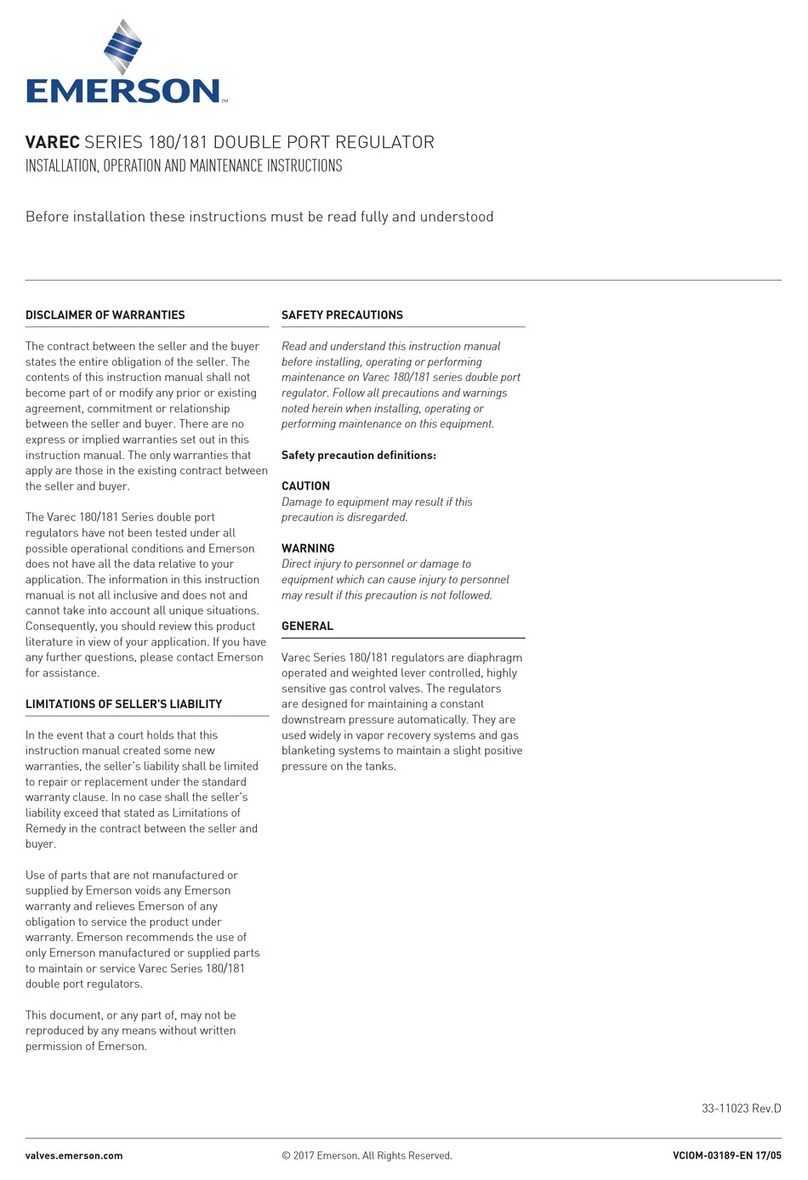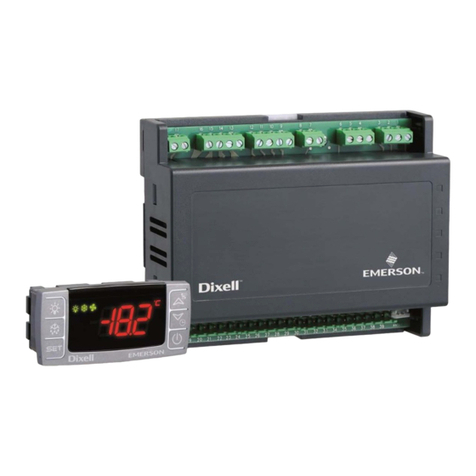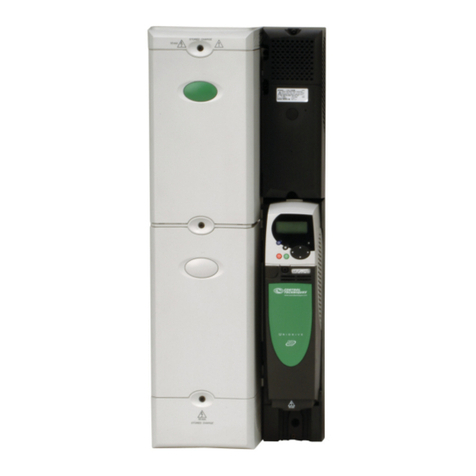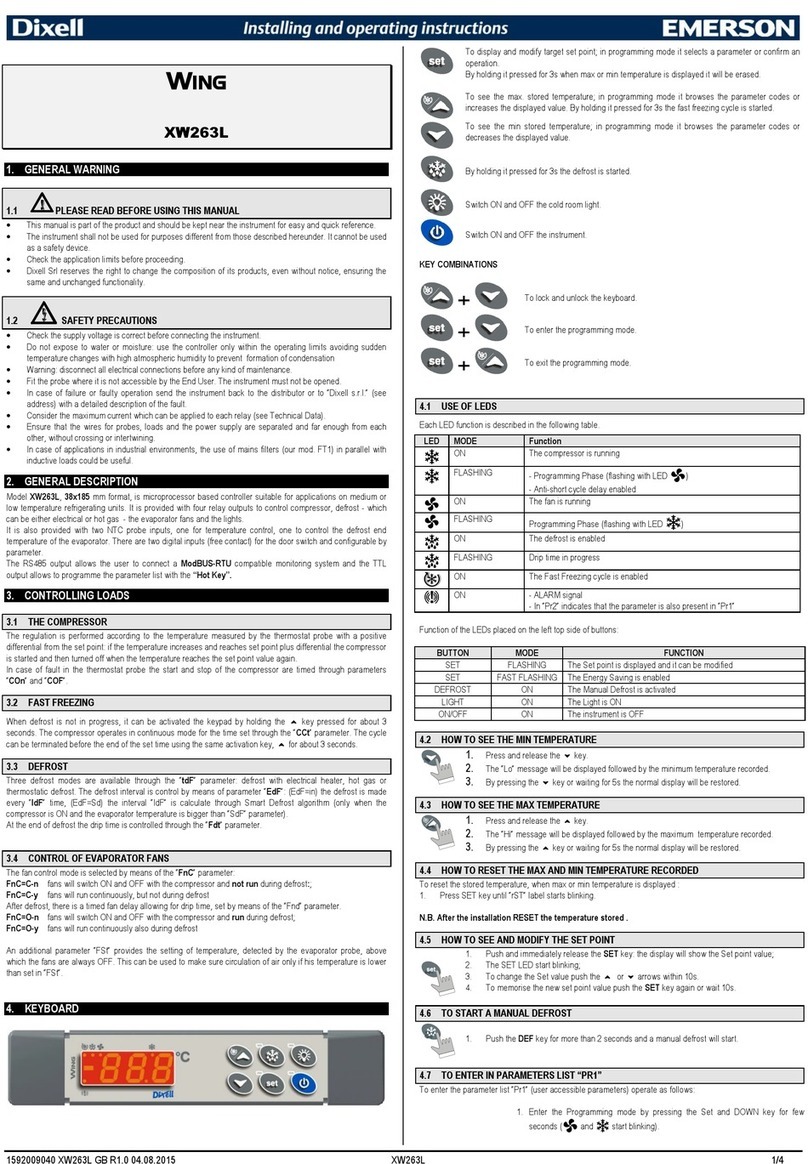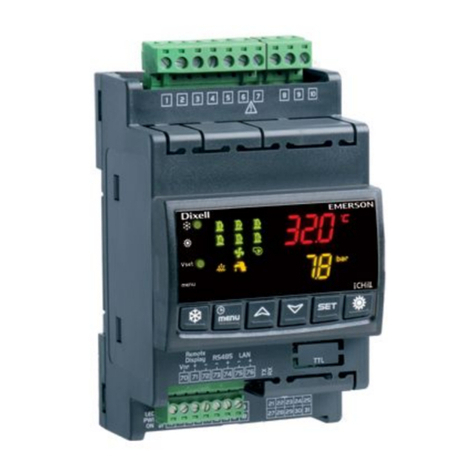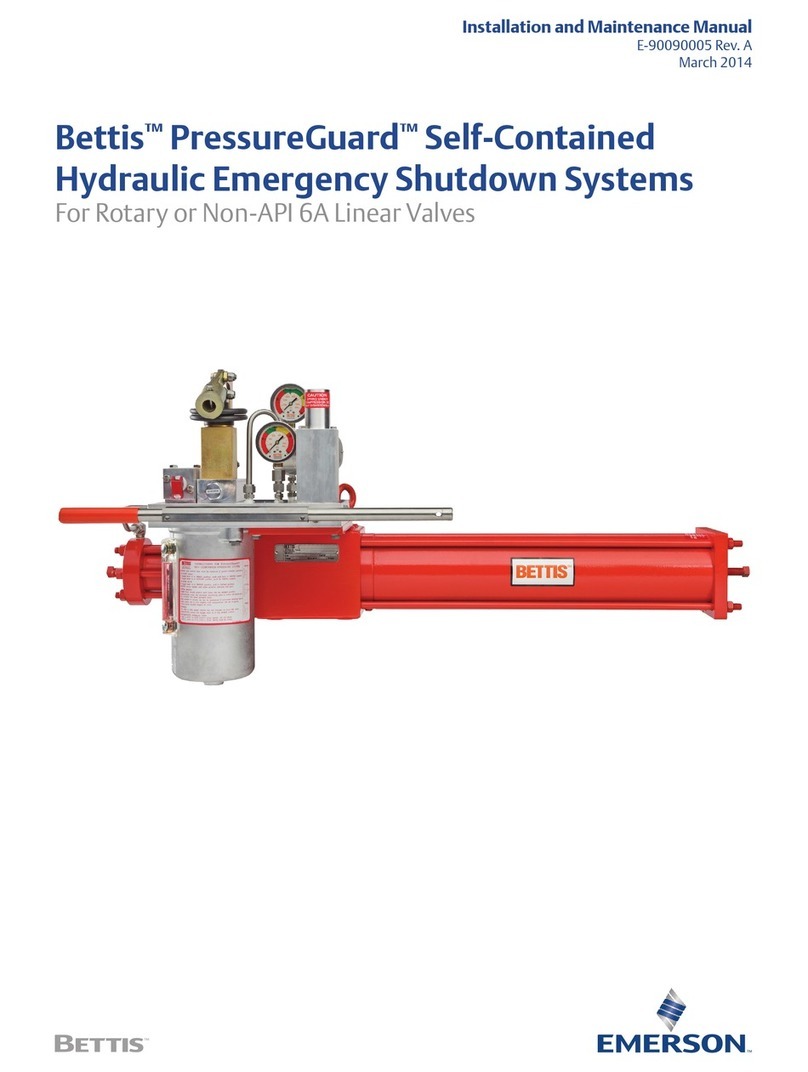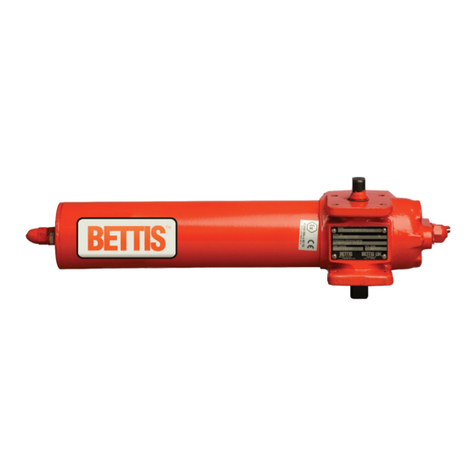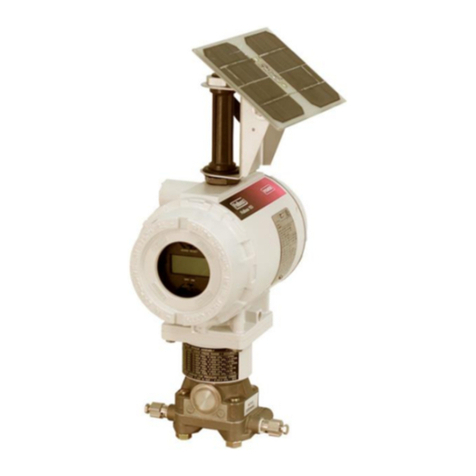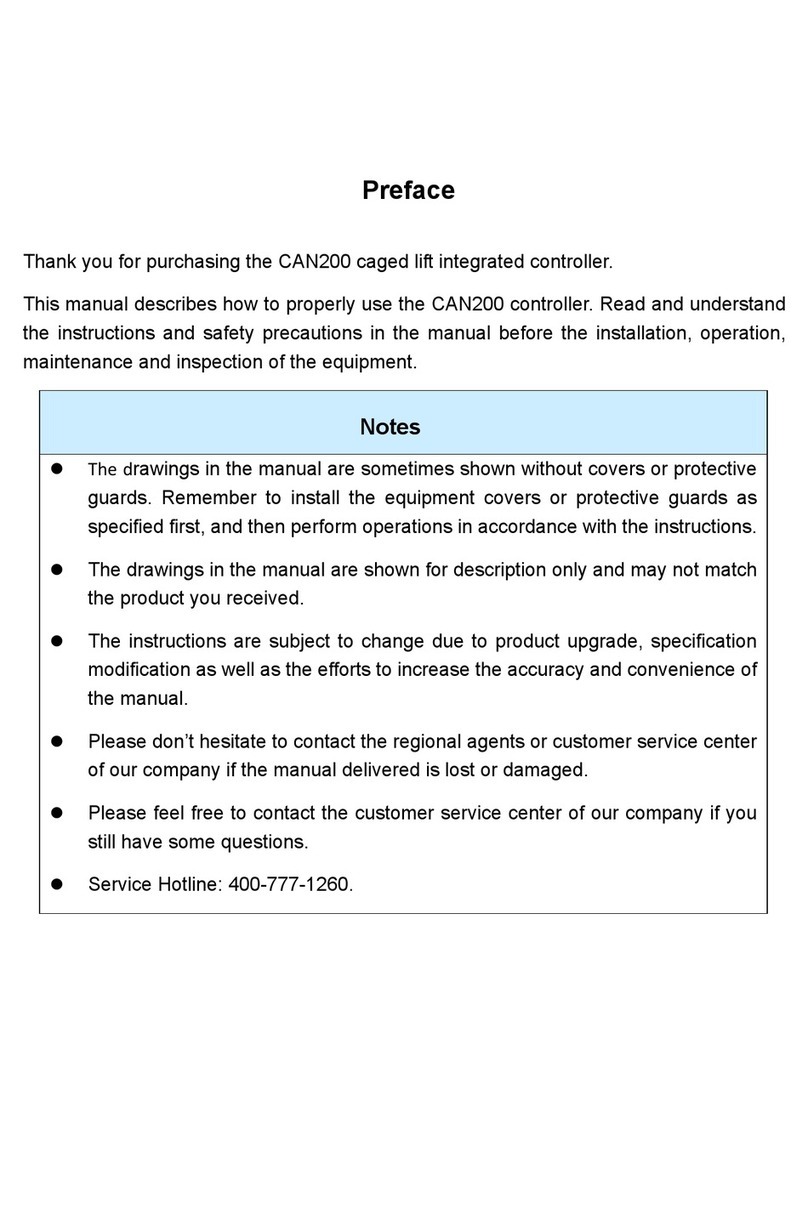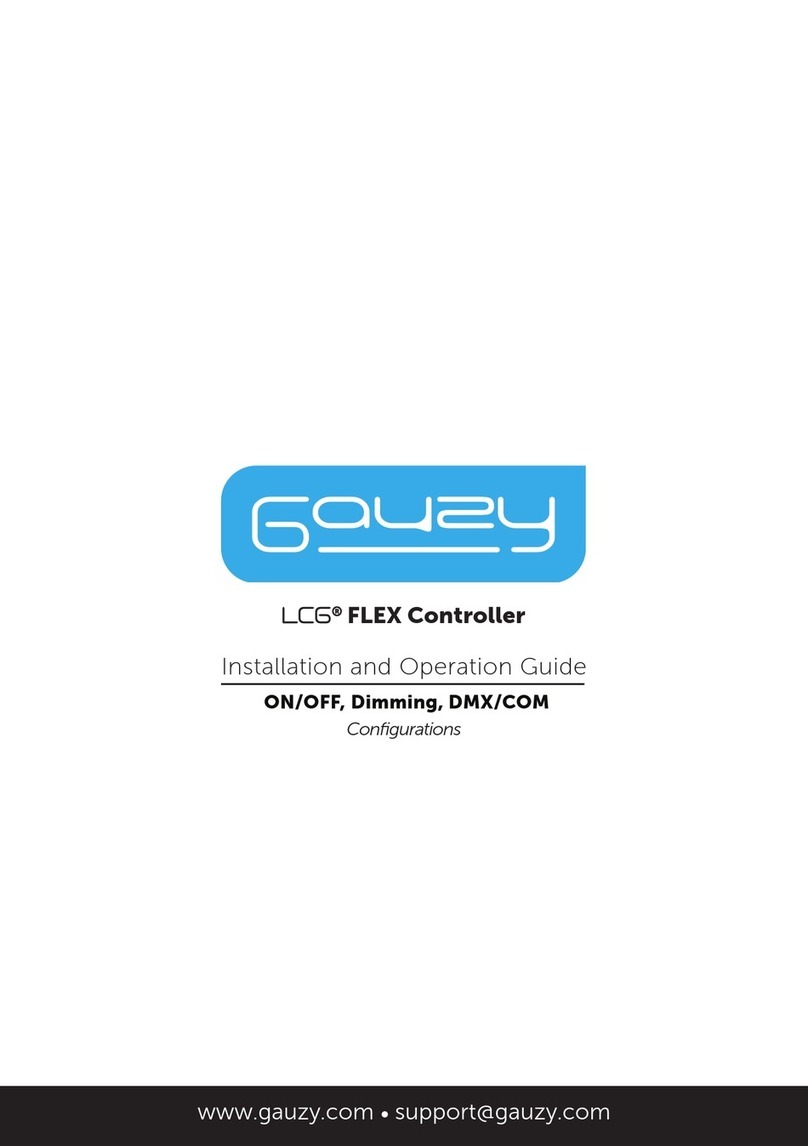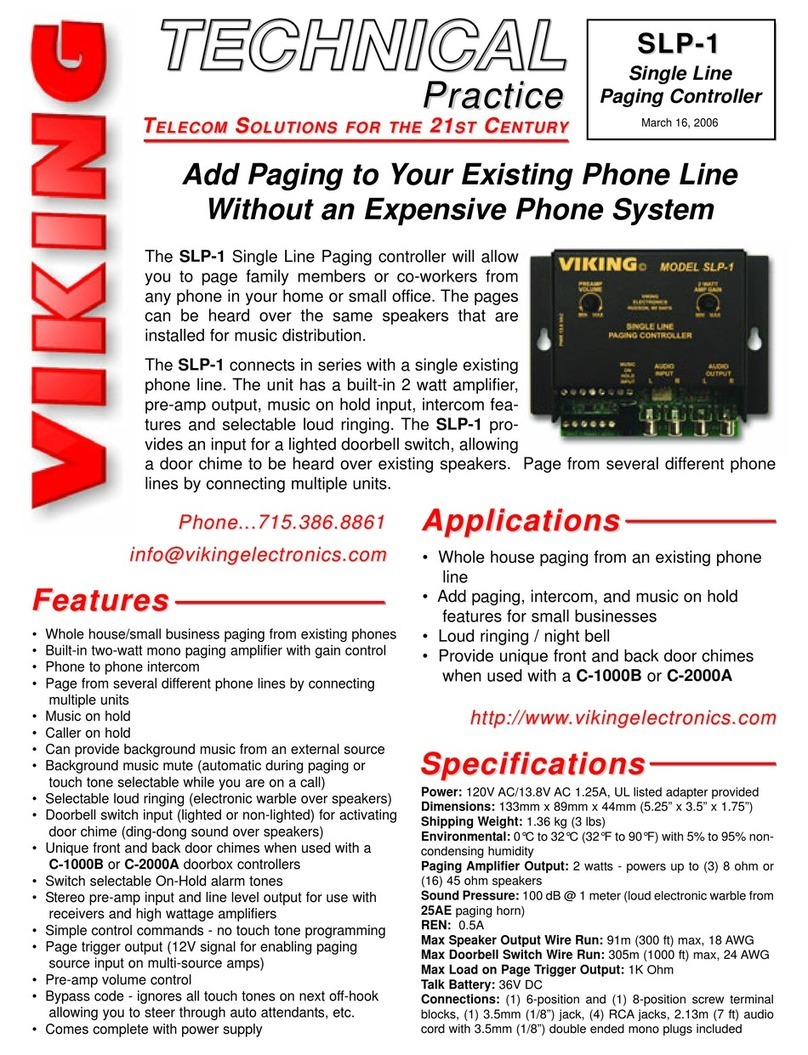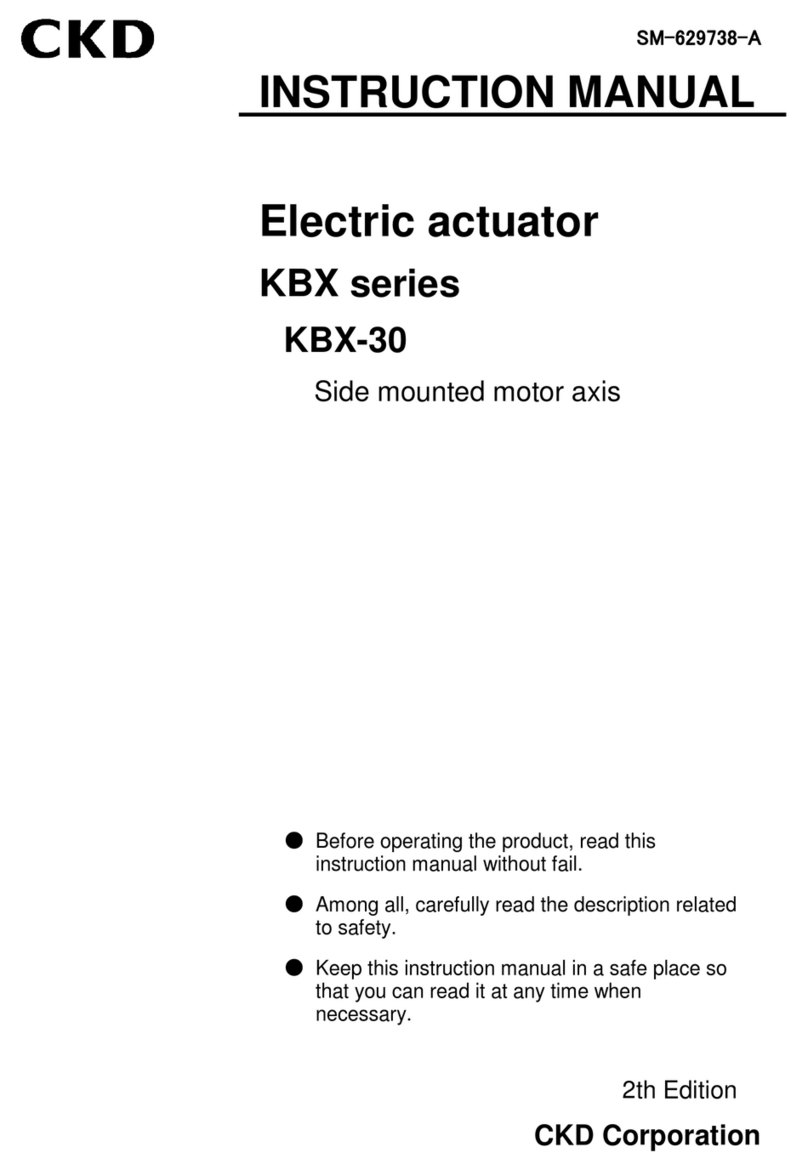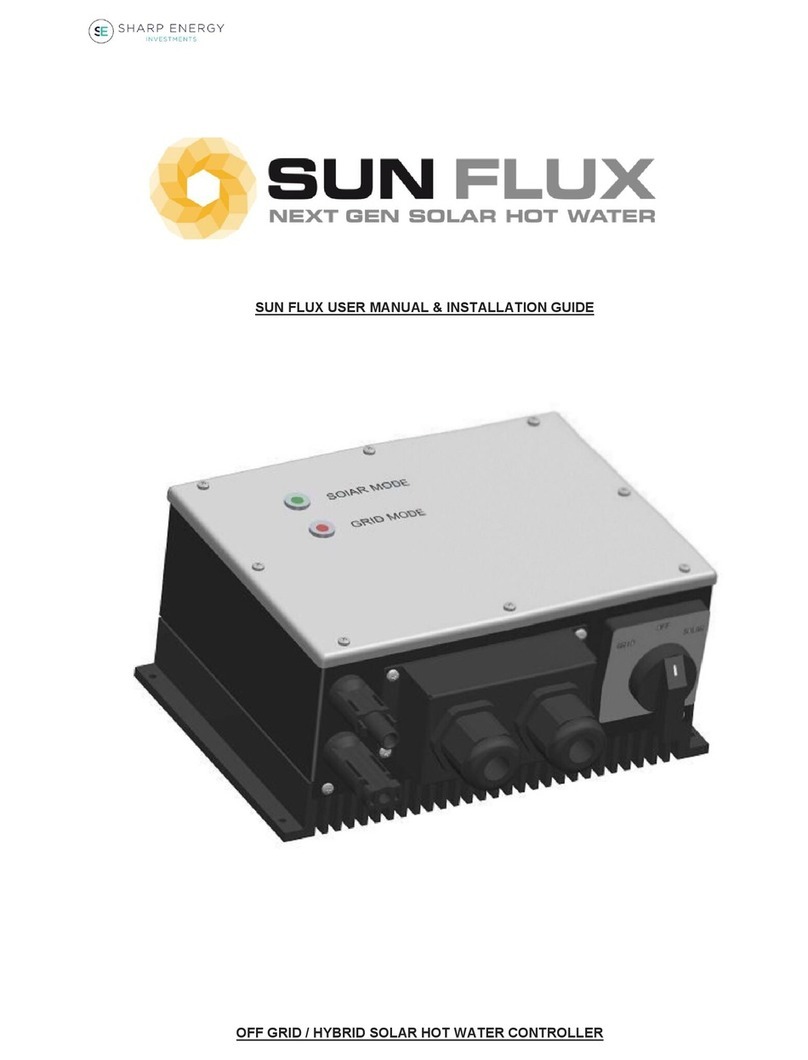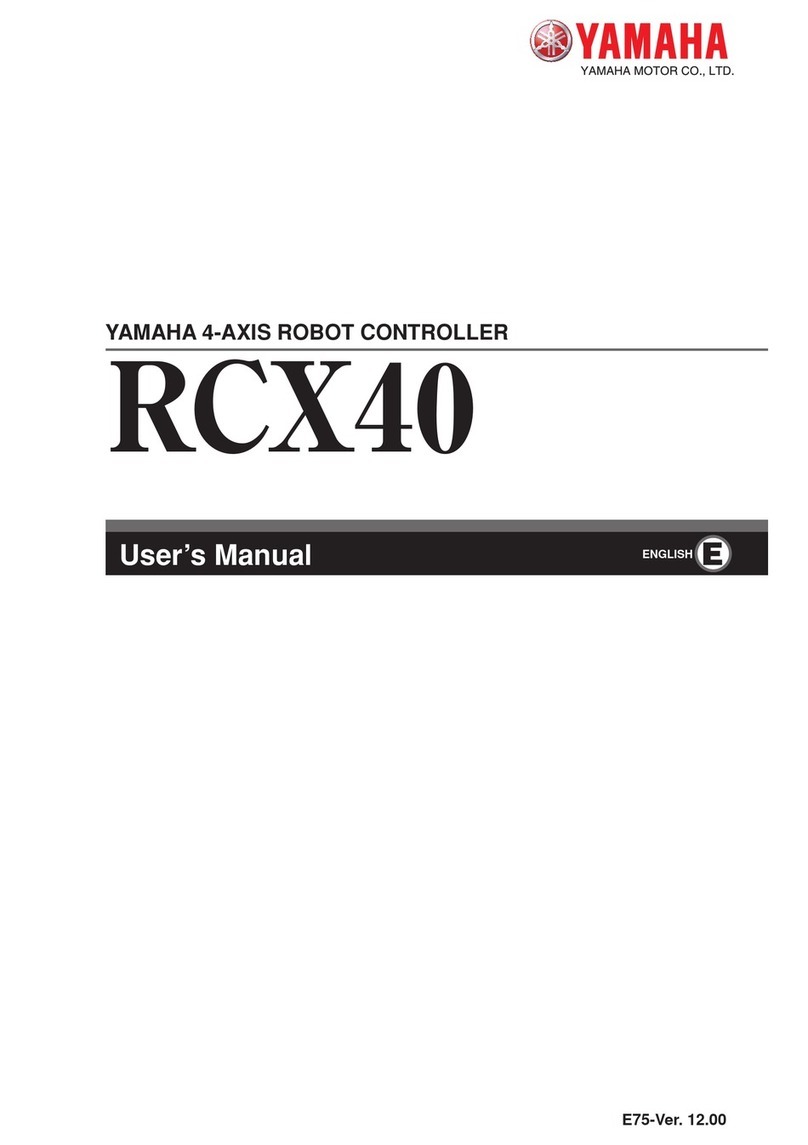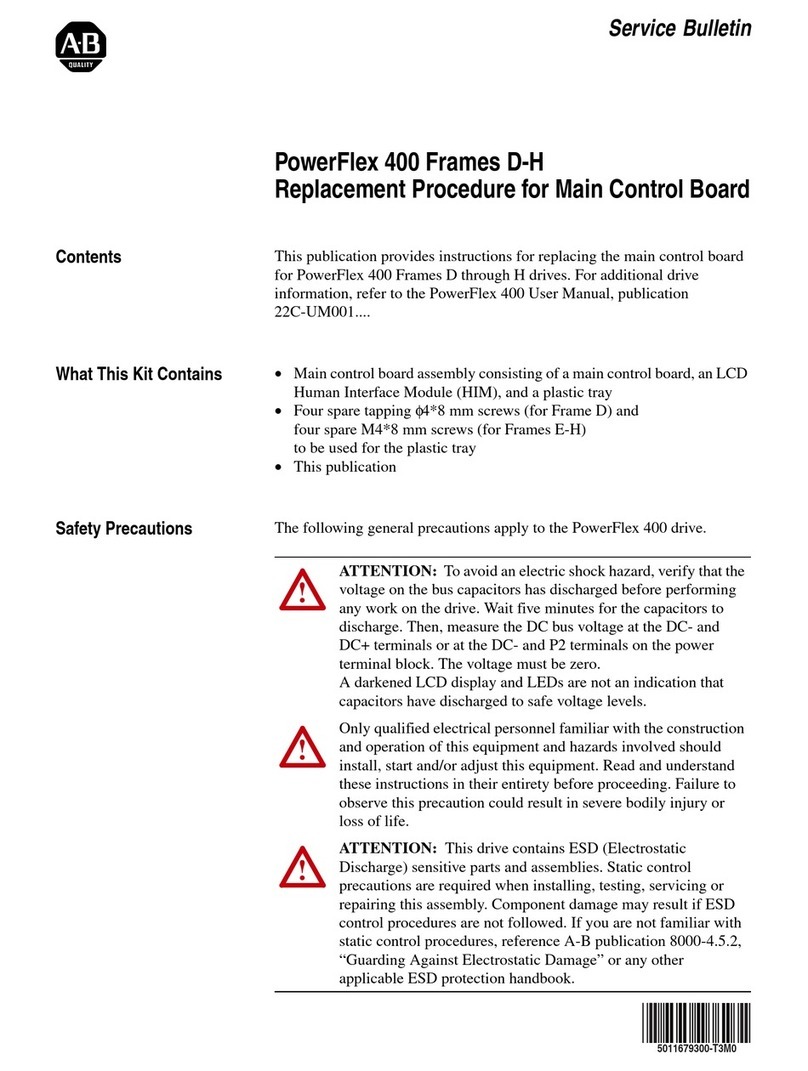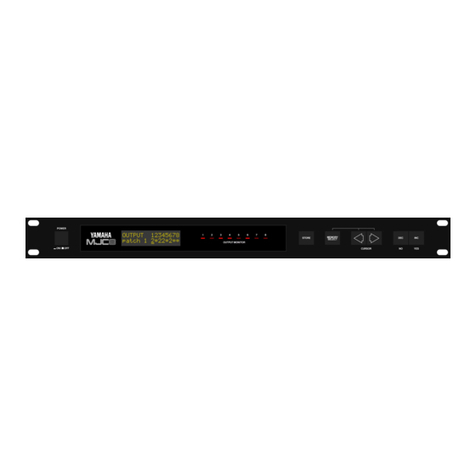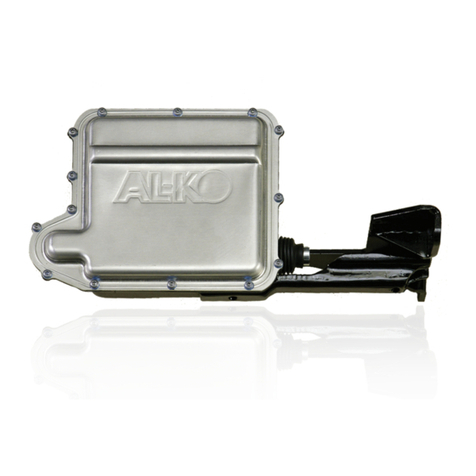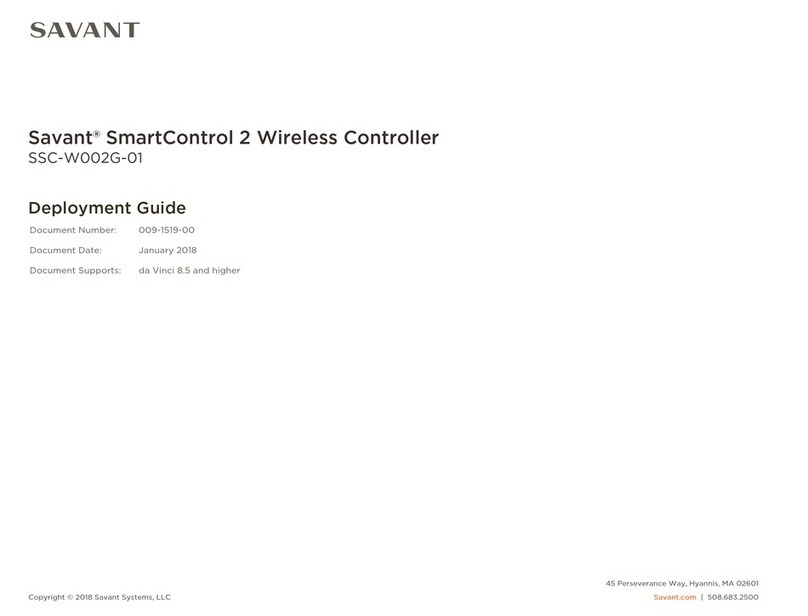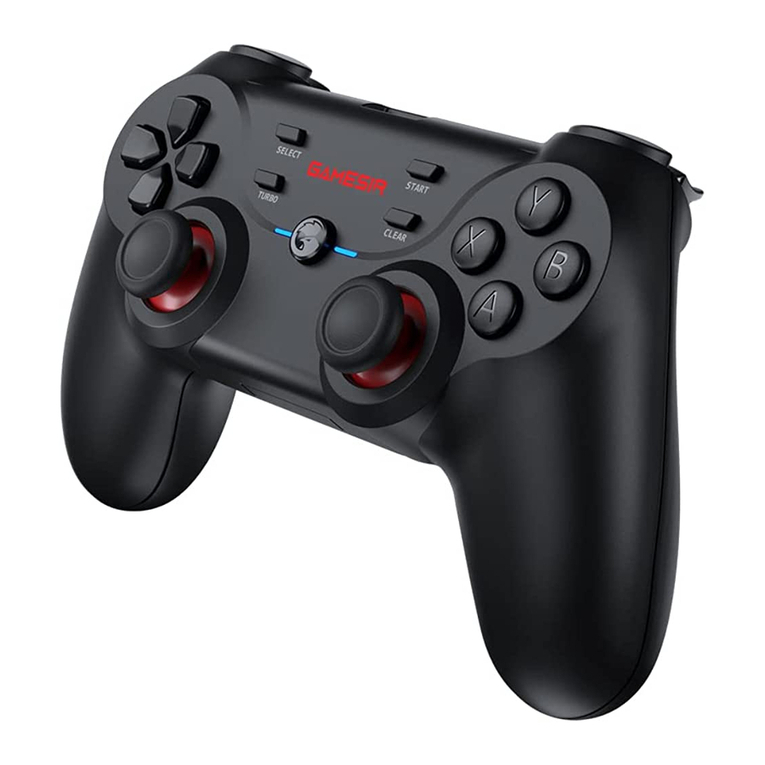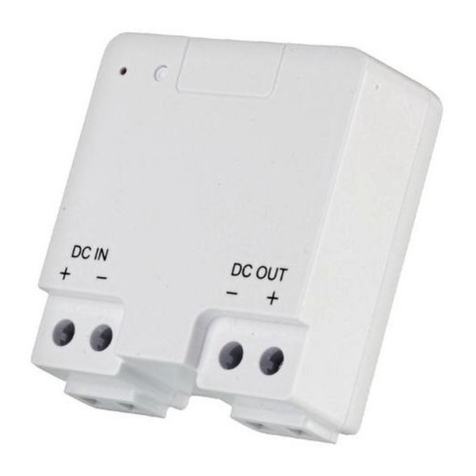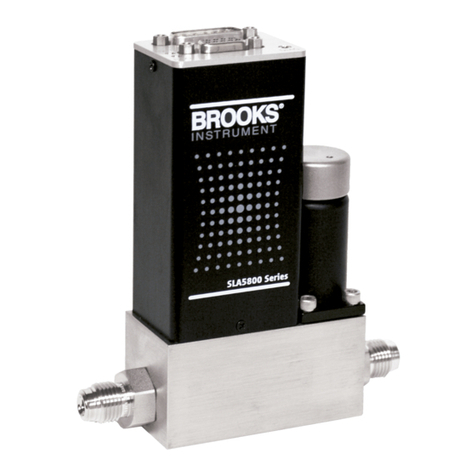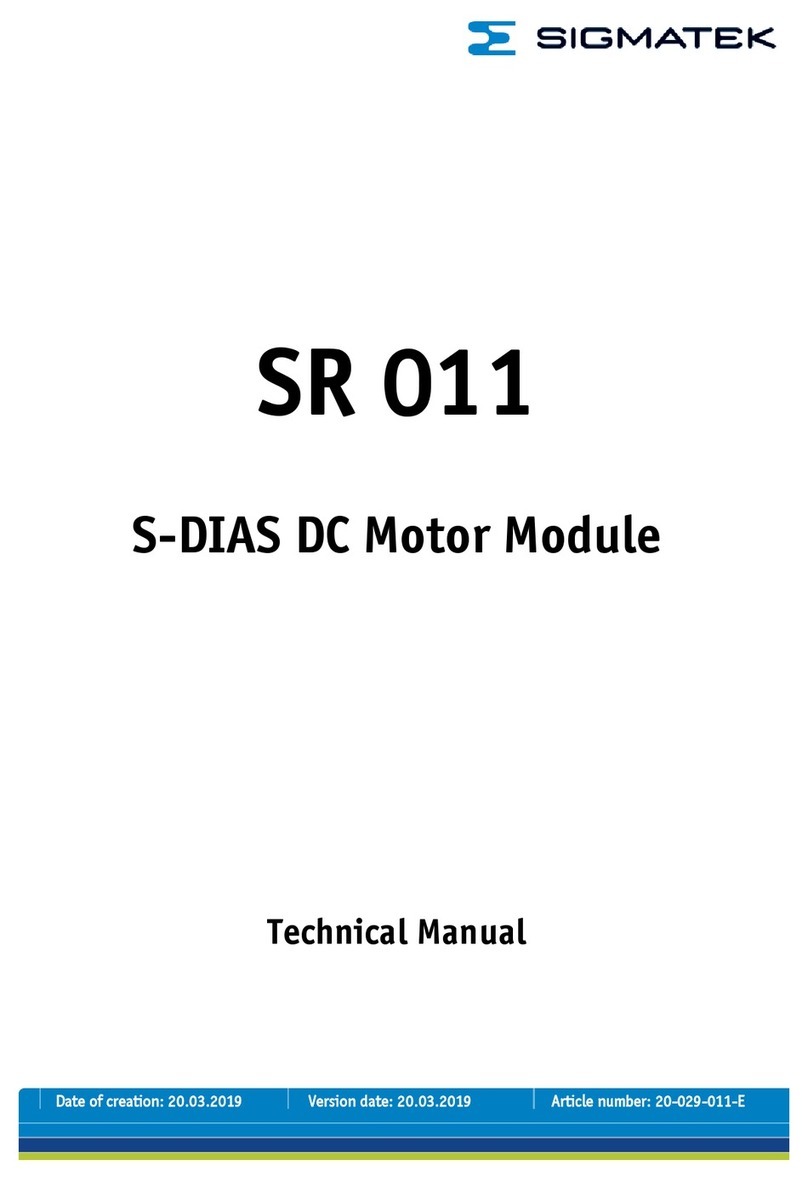
Service Instructions
124843E Rev. C
August 2015
4
Section 1: Introduction
Introduction
1�7 General Tool Information
1.7.1 Tools: All tools/Hexagons are American Standard inch. Large adjustable wrench,
two (2) large screwdrivers, Allen wrench set, set of open/box end wrenches,
rubber or leather mallet, torque wrench (up to 1200 foot pounds / 1627 N-m),
breaker bar, small drift punch and a drive socket set. For recommended tool and
wrench sizes refer to Section 6, Tables 6.3 through 6.10.
1�8 Actuator Storage
For applications where the actuator is not placed into immediate service, it is recom-
mended that the actuator be cycled with regulated clean/dry pneumatic pressure at
least once per month. Indoor storage, if available, is recommended for all actuators.
Care should be taken to plug all open ports on actuator and controls to keep out foreign
particles and moisture. Actuators should not be stored in an atmosphere that is harmful
to resilient seals. Contact factory for extended storage period.
1�9 Actuator Installation
1.9.1 Since there are many valve and actuator combinations, it is not practical to
include detailed instructions for each type. Mountings are designed to be as
simple as possible to keep the guess work out of the installation.
1.9.2 Actuators that are shipped from the factory with the travel stops adjusted for
approximately ninety degree rotation. Generally, it is necessary to make slight
travel stop adjustments once the actuator is installed onto the valve. Refer to
the valve manufacturer's recommendations for specific requirements. When the
valve has internal stops, the actuator should be adjusted at the same points.
NOTE:
The actual "stopping" should be done by the actuator. If the valve does not have
internal stops, adjust the actuator to the full open position. Using this as a reference
point, rotate the valve closed and adjust to the valve manufacturer's specifications for
total rotation.
1.9.3 Good instrument practices are also recommended. Clean/dry regulated
pneumatic pressure is essential for long service life and satisfactory operation.
It should be noted that new pneumatic lines often have scale and other debris in
them and these lines should be purged of all foreign material.
NOTE:
Scale and debris can damage control valves, solenoids, and seals.
1�10 Actuator Start-Up
1.10.1 Prestart-up checks
1. Inspect to ensure the unit has been mounted onto valve properly. Gear
flange mounting bolts, stem key, setscrew(s) are installed and secured.
